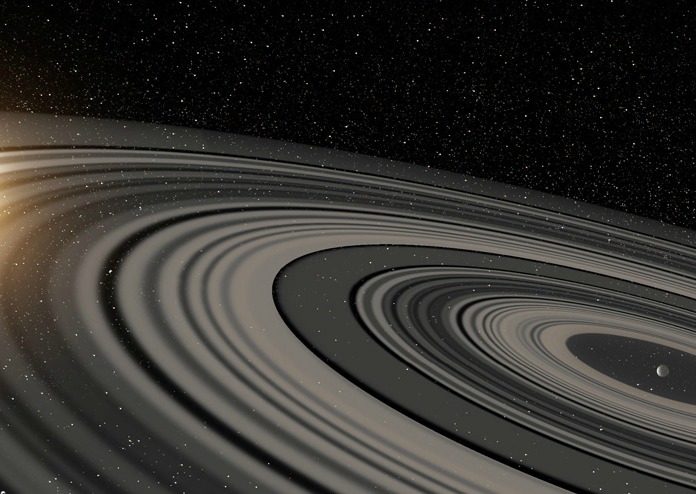Exoplanets are always fascinating to study, but J1407b is truly a wonder to behold. It is a massive planet with a set of rings that are larger and more complex than those of Saturn, our solar system's most famous ringed planet. In this blog, we will explore the unique features of J1407b, how it was discovered, and what it can teach us about the process of planet formation.
Discovery of J1407b
J1407b was discovered in 2012 by a team of astronomers using data from the SuperWASP (Wide Angle Search for Planets) survey. The planet orbits a star located approximately 400 light-years away from Earth, in the constellation Centaurus. Its size was estimated to be about 20 times the mass of Jupiter, making it one of the largest exoplanets ever discovered.
What makes J1407b truly unique is its ring system, which is estimated to be around 200 times larger than that of Saturn. In fact, the rings are so large that if they were around Saturn, they would be visible from Earth with the naked eye.
Unique Features of J1407b
J1407b's ring system is a complex and intricate structure. It is estimated to be over 120 million kilometers in diameter, which is larger than the distance between the Sun and the Earth. The rings are also highly variable, with gaps and structures that suggest the presence of moons or other objects within the ring system.
J1407b's large size and unique ring system have led astronomers to speculate about how it formed. One theory is that J1407b may have formed in a similar way to Saturn, by accumulating gas and dust in a protoplanetary disk. However, the size and complexity of J1407b's ring system suggest that it may have formed differently than Saturn.
What Can J1407b Teach Us About Planet Formation?
J1407b provides a unique opportunity to study the process of planet formation and the formation of ring systems around planets. By studying the composition and properties of J1407b, astronomers can gain insights into the physical and chemical processes that govern planet formation.
For example, J1407b's ring system may provide insights into how the rings around Saturn and other planets in our solar system formed. By studying the size, composition, and dynamics of J1407b's rings, astronomers can gain insights into the processes that govern the formation of planetary rings.
In addition, J1407b's large size and unique ring system may challenge current theories of planet formation. Current theories suggest that gas giant planets form by accumulating a solid core, and then accreting gas from the surrounding disk. However, J1407b's ring system suggests that gas giant planets may be able to accumulate material much more quickly than previously thought.
Conclusion
J1407b is a fascinating planet that challenges our understanding of planet formation and the formation of ring systems around planets. Its unique features and large size make it an ideal target for studying the process of planet formation in action, and for gaining insights into the physical and chemical processes that govern planet formation. By studying J1407b and other exoplanets, astronomers can continue to expand our understanding of the universe and the processes that govern it.

